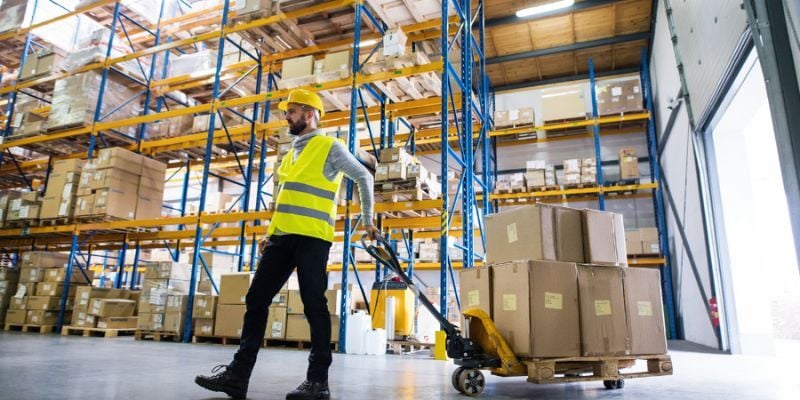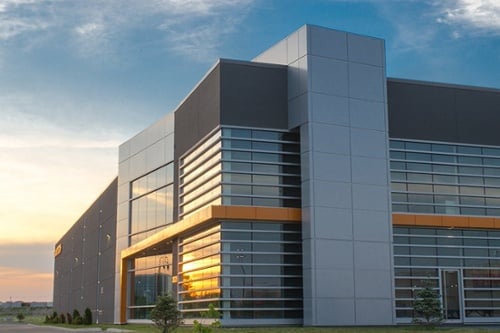In warehouses across North America, leaders talk about supply bottlenecks, racking, and inventory. But ask what keeps them up at night, and one answer wins: people. Attracting, hiring, and keeping the right warehouse team isn’t just an HR issue—it’s an operational lever that drives safety, throughput, and margins.
Did you know that almost half of warehouse workers separate from their employer each year?

The Real Cost of Turnover in Warehouse Operations
Turnover is structurally higher in this sector. The U.S. Bureau of Labor Statistics’ JOLTS data shows transportation, warehousing, and utilities averaged a 4.1% monthly separation rate in June 2025, which annualizes to roughly 49% (vs. ~38% annualized across all industries at 3.2% per month). Total separations include quits, layoffs/discharges, and other exits. Think about it: nearly half of the employees in that industry separate from their employer.
The direct and indirect costs of replacing an employee are significant:
- Direct hiring costs: Advertising, recruiter fees, background checks.
- Training and onboarding: The average warehouse role takes several weeks to reach full productivity. The onboarding process requires valuable time from HR, managers, and coworkers—time that could be spent on other critical tasks.
- Lost productivity and knowledge loss: New hires typically operate at 25–75% productivity during their first 4–12 weeks.
Beyond the checks you cut, you also have a higher incident risk for new workers. Travelers (the largest U.S. workers’ comp carrier) reports that over one‑third of injuries occur within a worker’s first year, underscoring why onboarding and a safety‑first culture matter.
👉Safety Tip: Investing in culture and rack safety reduces turnover and injury costs.
What That Looks Like in Dollars for Warehouse Management
Once hiring, onboarding, training, and lost productivity are factored in, replacing a single warehouse worker can cost between 30% and 150% of their annual salary. For most warehouse roles, the typical range is 30–70%, with 50% being a reliable average. For a $40,000/year associate, that translates to $12,000–$28,000 per replacement—a major financial drain for mid- to large-sized operations.

When Culture Fit Is Overlooked in Warehouse Management
Speed‑only hiring often backfires:
- A safety‑first facility hires a speed‑first picker. →near misses rise
- A collaborative team hires a lone wolf. →morale dips, rework increases
- A high‑tech DC hires a tech‑resistant operator. →system adoption stalls
Culture misalignment slows down operations and leads to higher turnover, disengagement, and more hiring costs. For instance, in 2019, culture‑driven turnover cost U.S. employers an estimated $223B over five years.
Employees in positive workplace cultures are up to four times more likely to stay. In 2024, 37% of employees reported that a weak workplace culture was the primary reason they left their previous job.

Six Steps to Build and Keep the Best Warehouse Staff
1. Communicate Warehouse Culture Clearly
Make safety and teamwork visible in the funnel.
- Put safety values and peer‑to‑peer accountability in job posts.
- Share short employee stories on your careers page and social media.
- Ask values‑based questions in interviews—not just “can you drive a lift?”
2. Hire for Culture, Train for Skill
Certifications can be earned fast; mindset takes longer.
- Use behavioral prompts (“Tell me about a time you stopped work for safety.”).
- Involve coworkers in the interview loop.
3. Nurture a Culture of Safety in Warehouse Operations
- Run scheduled rack inspections and fix damage quickly.
- Recognize employees who report hazards or suggest safety improvements (celebrate the save, not just the ship).
- Provide ongoing safety training and refreshers.
- Incident risk is materially higher in year one; targeted onboarding pays back.

4. Treat Warehouse Staff Like Your Greatest Asset
Retention is less about perks and more about predictability and trust.
- Offer predictable schedules where possible.
- Coach supervisors to model pauses, checks, and open communication.
- Celebrate milestones: attendance streaks, skill badges, injury‑free months.
5. Remove Friction from Daily Warehouse Operations
Well-organized environments reduce stress and mistakes.
- Keep aisles clear and marked; enforce flue space and stack discipline.
- Maintain equipment proactively so people don’t invent unsafe workarounds.
- Add warehouse and rack protection to prevent downtime from impact damage and injuries.
6. Create Growth Opportunities for Warehouse Staff
People are more likely to stay when they see a clear path forward in their careers.
- Cross-train (receiving↔picking↔replenishment).
- Post transparent internal ladders (Lead, Trainer, Auditor, Tech).
- Offer tuition/cert support for industry certifications.
The Payoff of Getting Warehouse Staff Right
Warehouses that prioritize culture and safety benefit from:
- Lower turnover and hiring spend (typically ~20% salary per replacement avoided).
- Higher throughput per head and fewer errors.
- Fewer injuries and less unplanned downtime (especially among new hires).
- Better employer brand locally—easier recruiting next season.
This isn’t “soft stuff.” It’s a hard‑numbers advantage that shows up in your P&L—and on every KPI board.
Case Studies: Safety That Boosts Warehouse Staff Retention
RFID at ABC Logistics
- Challenge: Difficulty protecting staff.
- Action: Rolled out RFID tags for real-time monitoring and hazard alerts.
- Result: Reduced errors, faster emergency response, and safer staff.
Safety Culture at XYZ Warehouse Solutions
- Challenge: Too many near misses and low awareness.
- Action: Regular safety training, hazard reporting, and rewards.
- Result: Fewer accidents and stronger employee engagement.
Damotech National Chain Success
- Challenge: Recurring rack damage, downtime, and safety concerns.
- Action: Damotech provided engineered inspections, rack protection, and repairs.
- Result: Saved $10M annually, cut downtime, and built a safer workplace that boosted retention.
Next Step: Protect and Retain Your Warehouse Staff
If you want a workplace that attracts and retains the best, start with safety. Damotech helps warehouse managers create safer environments with rack inspections, protection, and engineered repairs—the foundation of a culture where employees feel valued and protected. Book a Warehouse Rack Safety Consultation→
FAQ About Warehouse Staff Retention
What is the number one responsibility of a warehouse manager?

Why is warehouse staff turnover so high?

What are the most important warehouse manager responsibilities?

How can I improve warehouse operations?

How much does it cost to replace a warehouse worker?

How can warehouse managers reduce employee turnover?

- Clear communication of warehouse culture and expectations.
- Regular safety inspections and equipment maintenance.
- Proactive training and growth opportunities.
- Predictable schedules and fair workloads.
How do I calculate employee turnover?












